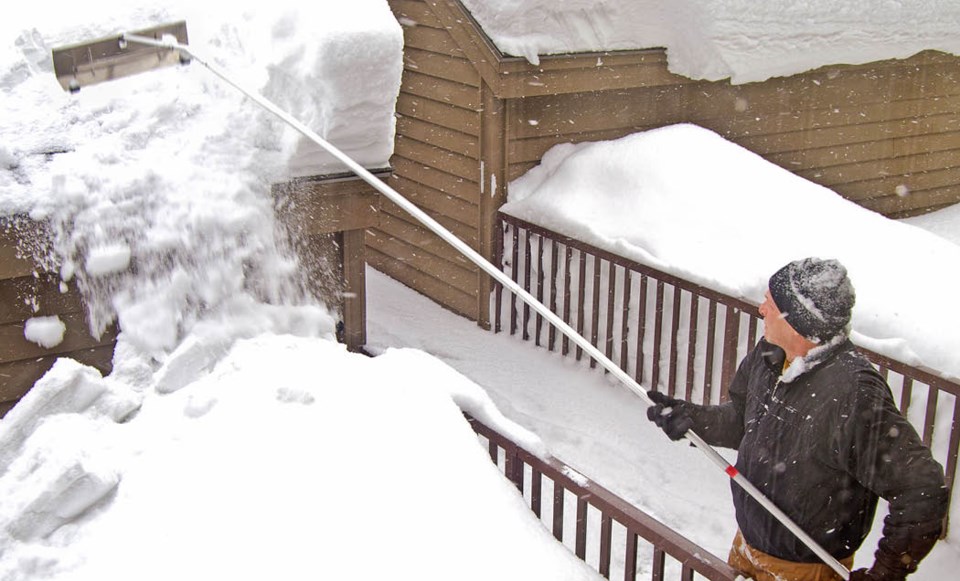SGI CANADA is offering homeowners advice to prevent damage that can be caused by condensation and ice damming.
According to a press release, both problems can often be spotted and hopefully prevented by removing as much snow as possible off your roof, along with a few other tips.
What's condensation and ice damming?
These problems are caused by freeze-thaw weather cycles. The snow becomes a layer of insulation on the roof, which warms up the air in the attic. If there is poor attic ventilation, the warm air can lead to condensation. This also causes the snow to melt and roll down to the edge of the roof and the soffits. Unless the melted snow can drain properly, it will freeze and build up over time, creating ice dams.
Throughout the winter, if the ice dams spread up the roof, water will work its way under shingles and get into attics. The water can seep into insulation, roof and walls. Warm air from a home will rise into the attic, making the ice dam grow. Over time, wet surfaces attract mold, which causes breathing problems and makes repairs much more expensive.
Five Tips to Prevent Ice Damming
1. Get the snow off the roof: You should always keep the snow load on your roof to a minimum to prevent it from causing an ice dam. SGI doesn't recommend climbing on the roof yourself. Use a roof rake or hire a professional to clear away excess snow. .
2. Try to find the roof vent: Make sure to clear the snow and ice out of it – not just the snow on top of it.
3. Clear gutters and downspouts: Melting snow and icy water need somewhere to go. Clean leaves out of downspouts and gutters in the fall and try to get rid of as much ice, snow and gunk as possible throughout the winter. Break off any icicles that build up around the roof.
4. Keep the air moving in the attic: the attic needs good insulation and ventilation. Without it, the heat inside the home will leak into the attic and cause the snow on the roof to melt. SGI recommends bringing in a roofing contractor to make sure the airflow is working properly.
5. Make sure fans and venting are sealed: Many homes have exhaust fans, air ducts, chimneys, attic hatches and pipes and many of these are vented into the attic. They're designed to move air flow properly, but if they aren't sealed, extra air can escape around them. SGI recommends going into the attic and checking the seals. If they’re leaky, repair them or hire a professional to take care of it. Good seals will save money by keeping the house warmer and preventing your furnace the working harder to heat it.
Know the Signs of an Ice Dam
1. Icicles on the roof: This is one of the first signs of an ice dam. Icicles building up indicate gutters are full and the melting water has nowhere to go.
2. Dark-coloured icicles: The colour is usually caused by dirt from inside the house and means there is probably an ice dam. Discoloured icicles are caused by water coming into the attic, picking up dirt and taking it back outside.
3. New water-stains on ceilings: Stains on the ceiling during the winter indicate an ice dam. Water stains can appear on every floor of your home. Water can also run down the inside of walls and pour into basements. This is a good indication of a dam.
4. Melted snow on your roof: Take a look at your roof and those of neighbours. Is melting the same or different? Are there places on the roof where the snow has melted more than others? More at the top or more at the bottom? If you have different types of melting, you might have ice damming.
5. Dams: Are there hills or mounds of ice running along the bottom edge of the roof? That's a good sign of ice damming.




.jpg;w=120;h=80;mode=crop)
